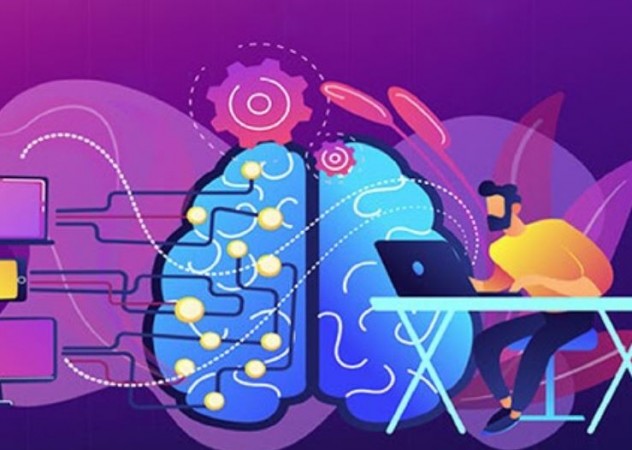
In today's data-driven world, machine learning has emerged as a revolutionary technology with a significant impact on various fields, particularly in data analysis. With the exponential growth of data, traditional methods of analysis have proven inadequate in handling the complexity and scale of modern datasets. This is where machine learning steps in, offering powerful tools and techniques to extract valuable insights from large and intricate data sets. Let's delve into the world of machine learning and explore its crucial role in data analysis.
Machine Learning
Machine learning is a subset of artificial intelligence (AI) that focuses on the development of algorithms and statistical models that enable computer systems to learn and improve from experience. Unlike traditional rule-based programming, where explicit instructions are provided, machine learning allows systems to learn from data and make predictions or decisions based on patterns and insights.
Basics of Data Analysis
Data analysis involves the process of inspecting, cleaning, transforming, and modeling data to discover useful information, draw conclusions, and support decision-making. Traditionally, data analysis has relied on statistical methods to extract insights from structured data. However, as data has become more complex and unstructured, traditional approaches have faced limitations in providing meaningful interpretations.
The Intersection of Machine Learning and Data Analysis
Machine learning and data analysis are closely intertwined. Machine learning algorithms can be leveraged to analyze large volumes of data quickly and efficiently, identifying patterns and trends that might not be apparent through traditional analysis. By automating the process of data analysis, machine learning accelerates decision-making and enhances the accuracy of predictions.
Types of Machine Learning Algorithms for Data Analysis
Supervised Learning
Supervised learning involves training a model on a labeled dataset, where the algorithm learns to map inputs to corresponding outputs. This type of learning is used for tasks like classification and regression.
Unsupervised Learning
Unsupervised learning involves analyzing data without labeled outcomes. Clustering and dimensionality reduction are common applications of unsupervised learning.
Semi-Supervised Learning
Semi-supervised learning combines elements of both supervised and unsupervised learning. It's useful when only a portion of the data is labeled.
Reinforcement Learning
Reinforcement learning is concerned with training agents to make sequences of decisions in an environment to maximize rewards. It's often used in scenarios where an agent learns to interact with its surroundings.
Machine Learning Models in Data Analysis
Linear Regression
Linear regression is a fundamental machine learning algorithm for predicting numerical outcomes based on input features.
Decision Trees
Decision trees are versatile models that make decisions based on a series of questions or conditions.
Random Forest
Random forests are ensembles of decision trees that enhance prediction accuracy and handle overfitting.
Support Vector Machines (SVM)
SVMs are effective for classification tasks by finding the hyperplane that best separates different classes.
Neural Networks
Neural networks are a type of machine learning model inspired by the human brain. They excel in complex tasks such as image recognition and natural language processing.
Feature Engineering and Dimensionality Reduction
Feature engineering involves selecting and transforming relevant features from the data to improve model performance. Dimensionality reduction techniques like Principal Component Analysis (PCA) help reduce the complexity of data without losing important information.
Challenges in Machine Learning for Data Analysis
While machine learning offers immense potential, it's not without challenges.
Overfitting and Underfitting
Overfitting occurs when a model learns the training data too well and performs poorly on new data. Underfitting, on the other hand, is when a model is too simplistic to capture the underlying patterns.
Bias and Fairness
Machine learning models can inherit biases present in the data, leading to unfair or discriminatory outcomes.
Interpretability
Complex machine learning models can be difficult to interpret, hindering their adoption in fields where explainability is crucial.
Benefits of Machine Learning in Data Analysis
Automation of Tasks
Machine learning automates repetitive and time-consuming data analysis tasks, allowing analysts to focus on more strategic activities.
Pattern Recognition
Machine learning algorithms excel at identifying intricate patterns and relationships within data, enabling more accurate predictions.
Real-time Insights
Machine learning enables real-time analysis of streaming data, empowering organizations to make timely decisions.
Predictive Analytics
By analyzing historical data, machine learning models can predict future trends and outcomes.
Real-World Applications
Healthcare
Machine learning aids in diagnosing diseases, predicting patient outcomes, and personalizing treatment plans.
Finance
Financial institutions use machine learning for fraud detection, risk assessment, and algorithmic trading.
Marketing
Marketers leverage machine learning to analyze consumer behavior, personalize campaigns, and optimize pricing strategies.
Manufacturing
Machine learning enhances quality control, predictive maintenance, and supply chain optimization in manufacturing.
Future Trends in Machine Learning and Data Analysis
The field of machine learning and data analysis continues to evolve.
Machine learning plays a pivotal role in modern data analysis, revolutionizing how businesses and industries interpret and utilize their data. By harnessing the power of machine learning algorithms, organizations can extract valuable insights, automate processes, and make more informed decisions. As technology advances, the synergy between machine learning and data analysis is poised to reshape various sectors, paving the way for a data-driven future.
Tamil Actor Mohan Tragically found dead on the Streets of Madurai
How to Build a Custom PC for Gaming or High-Performance Tasks
SC Stays Rahul Gandhi's Conviction in 'Modi Surname' Defamation Case